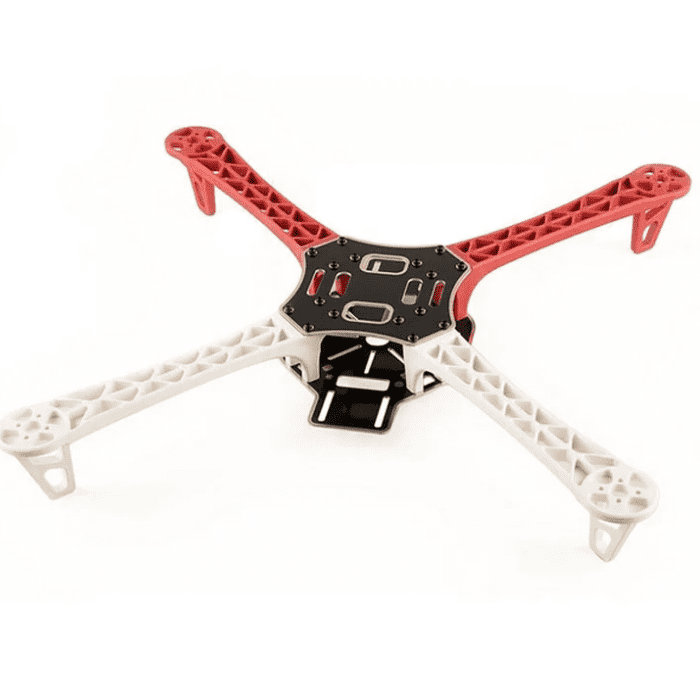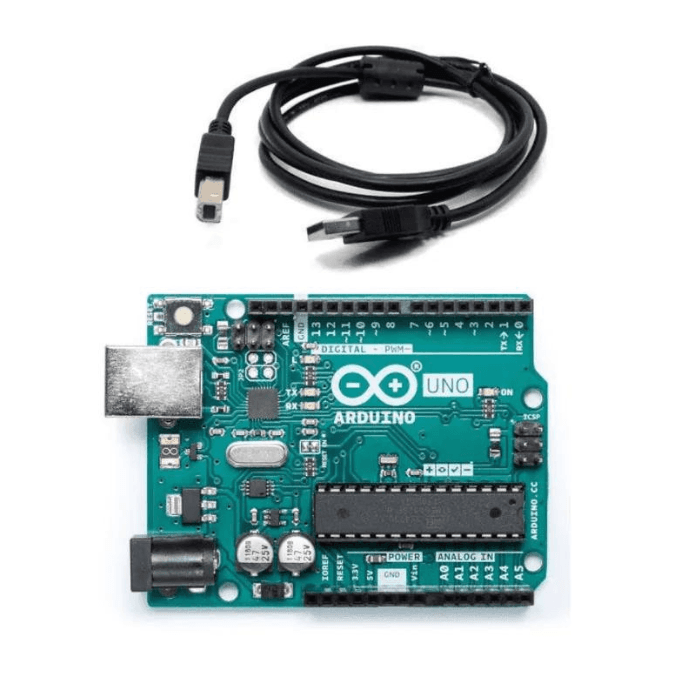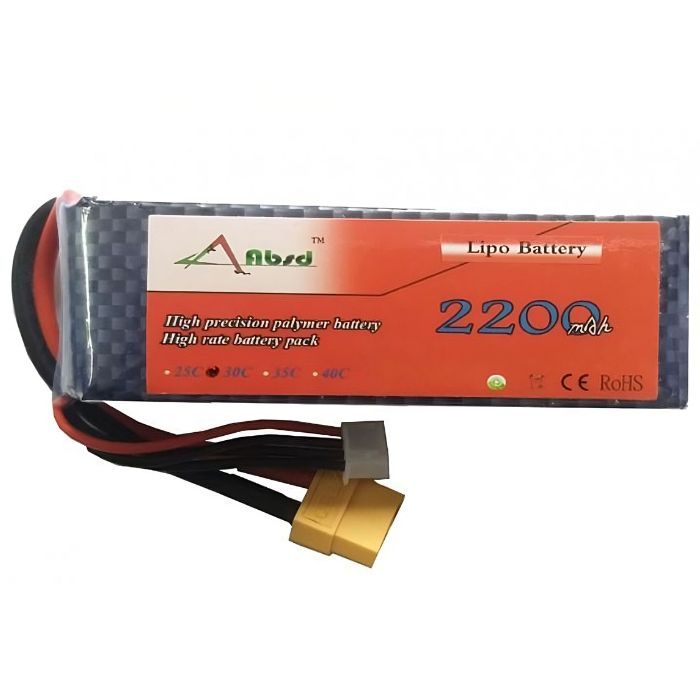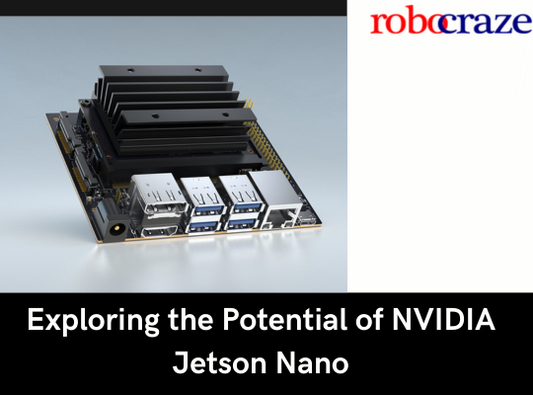Introduction
Are you fascinated by drones and interested in building your own? If you have ever dreamed of piloting a drone you assembled yourself, then this comprehensive guide is perfect for you. This comprehensive guide will walk you through the exciting journey of creating a quadcopter drone using Arduino. Building your drone not only gives you the satisfaction of creating something from scratch but also provides a deep understanding of the intricate components that make it soar through the skies.
Quadcopter drones have revolutionized various industries, from aerial photography and surveillance to recreational flying. Understanding the technology behind these remarkable flying machines and learning how to construct one will open up a world of possibilities. By delving into this project, you'll gain valuable skills and insights into the fascinating world of drone technology.
The primary objective of this project is to guide you through every step of assembling a functional and stable quadcopter drone using Arduino-based components. Whether you're a seasoned hobbyist or a curious beginner, this guide caters to all levels of expertise.
read our blog best flight controller for drone, provides detailed information about flight controller boards for drones, covering topics such as what a flight controller board is, how to choose the right one.
Components and Hardware Overview
F450 Frame

The F450 frame is a popular choice for DIY drone enthusiasts due to its robust construction and efficient design. Its sturdy frame and impressive diagonal wheelbase of 450mm provide stability and durability for smooth flights. We will take an in-depth look at each component of this frame and understand how they come together to create a strong foundation for your drone.
LiPo Battery

The LiPo (Lithium Polymer) battery is a crucial component that powers the drone and determines its flight time. We will explore the different types of LiPo batteries available, their specifications, and the importance of choosing the right battery for your drone's specific needs.
read more : Affordable Drone Batteries
Propellers

Selecting the appropriate propellers for your drone is crucial for optimizing its performance and stability. We will explore various types of propellers, their sizes, and materials to help you make an informed decision based on your drone's unique requirements. Additionally, we'll delve into the physics of propeller operation to grasp how they generate thrust and lift.
read more : Choosing the Right Propellers for Your Drone
BLDC Motors

Brushless DC (BLDC) motors are the heart of any drone. Understanding their operation principles, kV ratings, and how they connect to the electronic speed controllers (ESC) is essential for successful drone construction. We will explore different motor options and provide guidance on choosing the ideal motors for your drone.
read more : Drone Motor – Where to Begin?
Electronic Speed Controllers (ESC)

The Electronic Speed Controllers (ESC) play a vital role in controlling the speed and direction of the BLDC motors. We will delve deeper into the working principle of ESCs, their calibration process, and how they interface with the flight controller and receiver.
read more : How to Choose ESC for Quadcopter
Assembling the Drone Frame

Attaching Power Distribution Board
The power distribution board is a critical component that simplifies the process of distributing power from the battery to the ESCs. We will provide detailed instructions on how to attach and secure this crucial element to ensure proper power distribution and a safe drone build.
Mounting Electronic Speed Controllers (ESC)
Properly mounting the ESCs on the frame is vital for maintaining balance and stability during flight. We will demonstrate the correct placement and securing of the ESCs on the frame.
Connecting Motors to ESC
Making the correct connections between the BLDC motors and the ESCs is crucial for smooth and coordinated motor operation. We will provide a step-by-step guide on establishing these connections with precision and clarity.
Placing Top Plate of the Frame
The top plate of the frame serves as a protective cover and adds structural integrity to the drone. We will guide you through the process of properly attaching the top plate to ensure the frame's stability.
read more : Upgrade Your Control: Best Drone Remote Controllers
Calibrating the Electronic Speed Controllers (ESC)

Importance of ESC Calibration
Calibrating the ESCs is a critical step in the drone assembly process. Proper calibration ensures that all motors operate harmoniously, preventing potential issues during flight. We'll emphasize the significance of this calibration process and its impact on flight performance.
Connection Setup for Calibration
We will guide you through the setup required for calibrating the ESCs using an Arduino UNO and a few jumper wires. With a focus on details, we'll ensure a seamless calibration process.
Uploading Calibration Code to Arduino

Uploading the calibration code to the Arduino UNO is an essential step in the calibration process. We will provide the necessary code and explain the upload procedure in meticulous detail.
Testing the Calibration
After completing the calibration process, it's essential to test the ESCs and motors to ensure successful calibration. We'll walk you through the testing procedure to confirm the accuracy of the calibration and troubleshoot any potential issues.
read more : Drone Part List
Connecting Flight Controller and Radio Receiver
Positioning the Flight Controller
Proper positioning of the flight controller is vital for the drone's stability and responsiveness during flight. We will guide you in positioning the flight controller correctly on the frame and provide insights into the impact of its placement on the drone's flight characteristics.
Placing Arduino Receiver
Mounting the Arduino receiver effectively ensures optimal communication between the transmitter and the drone. We will explain the best placement practices for the receiver and how it affects signal reception and overall drone performance.
Power and Signal Connections
Establishing the power and signal connections between the flight controller, receiver, and ESCs is a crucial step before preparing for flight. We will provide clear and comprehensive instructions for these connections, ensuring a seamless integration of all components.
read more : How to fly a quadcopter
Attaching Propellers and Preparing for Flight
Choosing Suitable Propellers
Selecting the right propellers for your drone is essential for achieving the desired flight performance. We will guide you in choosing propellers based on your drone's specifications, exploring various propeller designs, and how they influence thrust and efficiency.
Properly Tightening Propellers
Properly securing the propellers to the motors is vital to prevent accidents during flight. We will provide a step-by-step guide on correctly tightening the propellers, emphasizing safety practices.
Arming the Drone for Flight
Before takeoff, the drone needs to be armed to ensure the motors start smoothly. We will explain the arming process in detail and highlight safety measures to follow during this crucial step.
Flying the Drone
Pre-flight Safety Checks
Performing pre-flight safety checks is crucial for a successful and accident-free flight. We will provide a comprehensive checklist to follow before takeoff, ensuring that you are well-prepared for a safe and enjoyable flying experience.
Taking Off and Controlling the Drone
We will guide you through the process of taking off and controlling the drone using the transmitter. Proper control techniques and flight adjustments will be covered in detail to help you master the art of drone piloting.
Flying Tips and Precautions
Flying a drone requires skill and understanding to handle various flight conditions. We will provide valuable tips and precautions to enhance your piloting abilities and safeguard your drone during flight.
read more : Drone Motor Maintenance: Tips to Keep Your Motors Running
Troubleshooting and Common Issues
Drone Not Arming
If your drone is not arming, don't worry; we've got you covered. We will troubleshoot potential issues and guide you through the necessary steps to get your drone ready for flight.
Motors Not Spinning Correctly
In case you encounter issues with motors not spinning correctly, we will walk you through troubleshooting and resolving the problem, ensuring that your drone's propulsion system functions flawlessly.
LiPo Battery and Voltage Requirements
Understanding LiPo battery specifications and voltage requirements is crucial for safe and optimal drone performance. We will provide detailed information on LiPo batteries and how to select the appropriate one for your drone's specific needs.
Propeller Recommendations
Choosing the right propellers can significantly impact your drone's flight performance. We will provide specific propeller recommendations based on various drone configurations to help you make the best choice.
Tips for Stable Flight
Achieving stable flight is essential for smooth aerial photography or other drone activities. We will share valuable tips and techniques to maintain stability during flight and enhance your overall drone piloting experience.
read more : Getting started with a Quadcopter
Conclusion
Congratulations on completing your drone using Arduino! This guide has equipped you with the knowledge to build a fully functional quadcopter drone, emphasizing the central role of Arduino in making your drone project a reality.
Building a drone is a rewarding experience that involves knowledge from various sources. We acknowledge the collective wisdom of drone enthusiasts, hobbyists, and experts whose valuable insights have contributed to this guide.
In this guide, we have covered every aspect of building a DIY Arduino-based Quadcopter Drone. From the initial frame assembly to troubleshooting and achieving stable flight, each chapter has offered valuable insights and instructions for a successful drone build.
If you appreciate our work don't forget to share this post and leave your opinion in the comment box.
Please do check out other blog posts about Popular electronics
Make sure you check out our wide range of products and collections (we offer some exciting deals!)













